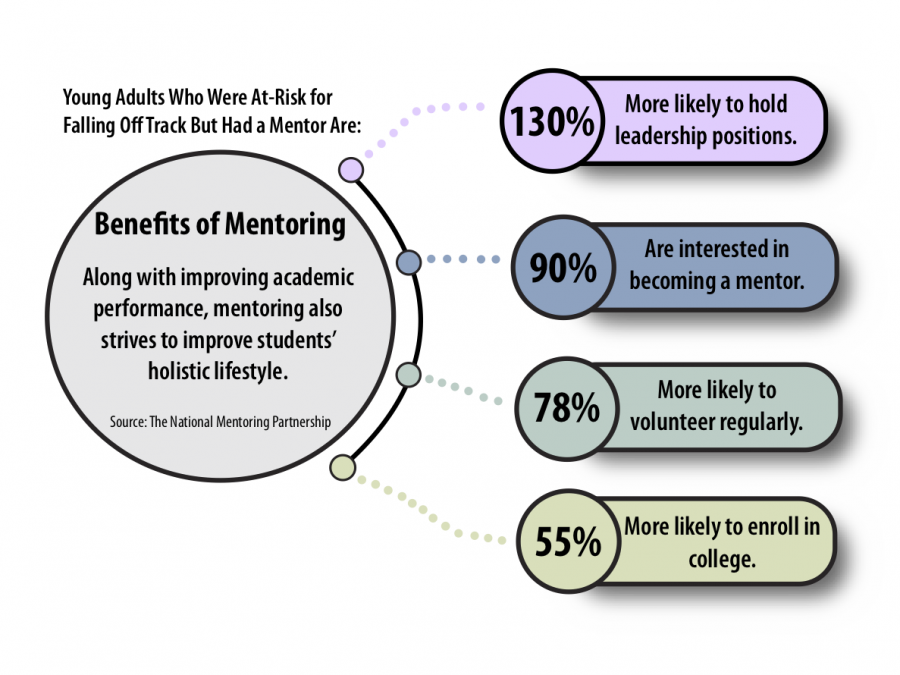CU 1-to-1 celebrates National Mentoring Month
January 23, 2020
A mentoring program for schools in Champaign-Urbana, CU 1-to-1, is starting the year by celebrating National Mentoring Month. The University’s Facilities and Services celebrated 15 years of partnership with CU 1-to-1 on Jan. 15.
CU 1-to-1 is a mentoring program that offers mentors to Champaign-Urbana students in grades 3-12. According to Lauren Smith, community outreach coordinator for Champaign Unit 4 schools, there is no set curriculum for mentoring within the program, unlike other programs.
“It is a relationship-building program,” Smith said. “They’re not doing catch-up work with the students. They’re not doing tutoring. They’re not checking to see if they completed their homework for the day.”
Instead, it’s a holistic program that strives to create a relationship between mentor and mentee, to create trust and confidence and to do day-to-day activities together, such as playing basketball, Smith said.
Throughout January, those in the program will participate in multiple events. On Tuesday, a mentor breakfast will take place to honor and discuss the meaning of being a mentor; on Jan. 30, “Thank You Mentor Day” will give mentors an opportunity to use their mentor benefits card for discounts and giveaways at local businesses.
Get The Daily Illini in your inbox!
The University’s F&S have been in partnership with CU 1-to-1 since 2005. Throughout these years, employees from F&S have accounted for approximately 10,000 hours of volunteer mentoring time and 90 total mentors.
Maureen Banks, director of the division of safety and compliance within F&S, has spearheaded the program for the past 15 years.
Banks initially started volunteering at Booker T. Washington Elementary School by reading to students and having students read to her. She also participated in their celebration of African American literature during Black History Month. She said it became evident to her that she wanted to do more.
“I did a proposal to F&S administration, and talking with the teachers at the school, (we) worked up a way that we could have F&S participate in the program,” Banks said. “We started with four mentors. We currently have 45 mentors.”
Banks said she did not achieve this by herself; she credits some of her colleagues, including Terrylynn Roy, office support specialist within the safety and compliance division, for helping to work day-to-day operations, like keeping track of the mentors and preparing recruitment lunches.
There are four steps that C-U has in place to become a mentor, according to Thomas Howley, director of mentoring and community involvement for the Urbana school district: fill out an application, have a background check done with fingerprinting, participate in a brief interview and take part in a two-hour training session to gain background and understanding into what mentoring consists of.
“It’s really a self-selection,” Banks said. “For us, mentors are special people: someone who wants to give back to the community, someone who wants to be a part of a child’s life.”
Each mentor is matched with a mentee after the process is completed, based on common interests and backgrounds. According to the National Mentoring Partnership, young adults who were at-risk for falling off track but had a mentor are 55% more likely to enroll in college, 78% more likely to volunteer regularly, 90% interested in becoming a mentor and 130% more likely to hold leadership positions.
“Our collection of data supports that; we see examples of that,” Howley said. “Over and above statistics though, my office is in what we call the ‘community room’ in the school, and often I’ll see a mentee waiting for their mentor. There is a big window that looks out onto the parking lot, and sometimes the mentees will sit and wait for their mentor to come. I can see the light in their eyes when their mentors are approaching.”
CU 1-to-1 encourages University graduate students to become mentors, as graduate students are more likely to be around for a longer period of time. However, undergraduate students can volunteer for a commitment of an hour each week with the program. When becoming a mentor, the program asks for a year commitment to the child.
“We ask for one year, but our hope and desire is that they would stay with that student through high school,” Banks said.
The program is designed in such a way that the mentor and mentee are able to walk alongside each other, and the mentor is with the young person through the experiences they encounter in their life, Howley said.
F&S, hand-in-hand with the program, has brought positive change to C-U school districts. However, statistics aren’t ideal in measuring this change, according to Smith.
“It’s hard to measure the exact impact of the program,” Smith said. “You can’t really look at statistics and say, ‘This student improved 30% in math, because he had a mentor,’ because you don’t know all other factors that could be contributing to it. What we can say is that students will come to us and say ‘I would not have graduated without my mentor walking alongside me and encouraging me to stay in school.’”
In the future, Banks said she hopes to uphold one of the guiding principles inside F&S: perseverance.
“We persevered with this program for 15 years, and we’re looking for 15-plus years (in the future),” Banks said.







